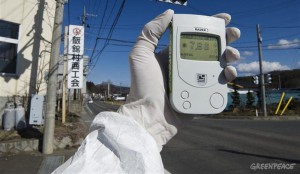First off, I’d like to address the fact that before being assigned this topic I was unaware of the Fukushima disaster and after speaking with roommates, friends, and colleagues, most are still unaware of the tragedy. Following a major earthquake in March 2011, a 15-metre tsunami disabled the power supply and cooling of three Fukushima Daiichi reactors. This natural disaster caused a nuclear accident on the 11th of that month. All three cores largely melted in the first three days. Radioactive releases continued to flow over days 4 to 6 eventually taking the accident rating from a 7 on the INES scale to a total of 940 PBq. After two weeks the three reactor units 1-3 were stable with water addition but no proper heat sink to remove decay heat from fuel. In the next few months, by July, they were being cooled with recycled water from the new treatment plant. reactor temperatures has fallen to below 80 degrees celsius towards the end of October. Apart from cooling, which wasn’t officially shutdown and announced till mid-december, the basic task ongoing was to prevent release of radioactive materials, particularly in contaminated water leaked from three units.
Since the accident of “3.11”, Japan has been trying to develop a new national energy policy; but even three years later has failed to adopt a new policy. While this may concern most it doesn’t come as a surprise given that developments in energy capacity and infrastructure are normally measured in decades, not years. Even as history shows, Japan is not the quickest to move on substance issues like this as it failed to do so in 1986 after Chernobyl. The implications of the Fukushima disaster continue to be felt around the world, particularly for the nuclear energy industry. Forty-eight of Japan’s 50 nuclear reactors remain off-line today. The NRA began revising safety standards over the summer of 2013, that the operators of reactors had complied with.
In conclusion I believe Japan’s energy challenge over the next several years should indicate setting a clear energy for the future, and building strategies to execute the vision exploiting Japan’s world-beating technologies to benefit the people of its own islands, future generations of Japanese.
References:
http://worldnews.nbcnews.com/_news/2013/10/03/20797895-water-6700-times-more-radioactive-than-legal-limit-spills-from-fukushima?lite
http://en.wikipedia.org/wiki/Fukushima_Daiichi_nuclear_disaster
http://www.theguardian.com/environment/2013/dec/03/fukushima-daiichi-tsunami-nuclear-cleanup-japan
